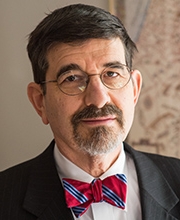Jewish scholars of midrash have recognized that “midrashic” techniques, methods of interpretation of texts in the Hebrew Bible, have been creatively woven into Christian Gospel narrative and teaching material as much as Jews worked creatively with midrash in their own literature.
Jon D. Levenson

Jon D. Levenson wrote The Death and Resurrection of the Beloved Son: The Transformation of Child Sacrifice in Judaism and Christianity to argue essentially that the “Christ of faith” figure in the Gospels and Pauline epistles was a distinctively Christian-Jewish midrashic creation:
Jesus’ identity as sacrificial victim, the son handed over to death by his loving father or the lamb who takes away the sins of the world . . . ostensibly so alien to Judaism, was itself constructed from Jewish reflection on the beloved sons of the Hebrew Bible. . . . (p. x)
Another theme of Levenson’s work is that the Christian understanding that Jewish religion was obsolete is also the product of a midrash on Jewish scriptures:
[T]he longstanding claim of the Church that it supersedes the Jews in large measure continues the old narrative pattern in which a late-born son dislodges his first-born brothers, with varying degrees of success. Nowhere does Christianity betray its indebtedness to Judaism more than in its supersessionism. (p. x)
So we have a scholar of Jewish midrash expounding on the idea that the most central Christian beliefs found in the New Testament were created from a form of interpretation of the Hebrew Bible (midrash) that was shared by Second Temple Jews and Jewish-Christians alike. Continue reading “Midrash and Gospels 3: What some Jewish scholars say (and continuing ‘Midrash Tales of the Messiah’)”

